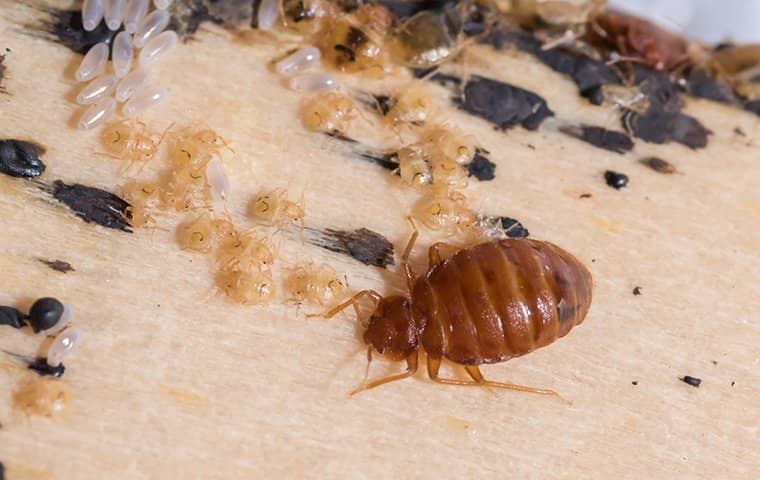Best Kings Pest Control Cincinnati: Premier Pest Control Experts
Wiki Article
Kinds Of Insect Control: Which Approach Is Right for Your Problem?
When faced with a parasite invasion, the option of a suitable approach for insect control is crucial in successfully taking care of the circumstance. By discovering the various kinds of pest control techniques readily available, individuals can make educated choices tailored to their special circumstances, making sure an extra reliable and sustainable result in parasite removal.Chemical Bug Control
Chemical parasite control involves the use of artificial or normally derived chemicals to handle and get rid of pest populations successfully. This approach is frequently made use of in agriculture, forestry, and domestic setups to battle a variety of parasites, including pests, rodents, and weeds. Using chemical pesticides can offer quick and targeted options to pest problems, making it a popular choice for many individuals and companies.One of the crucial advantages of chemical bug control is its capability to quickly get rid of bugs, lowering the threat of damages to plants, residential or commercial property, and human health and wellness. By utilizing certain chemicals that target specific insects, this technique can efficiently control infestations while reducing harm to advantageous organisms and the setting when used properly.
Nevertheless, making use of chemical insect control also raises concerns concerning possible negative impacts on non-target types, water sources, and human health. It is crucial to follow safety and security standards, apply chemicals responsibly, and consider different bug control techniques to lessen these risks and ensure lasting insect administration methods.
Biological Bug Control
Organic parasite control, also understood as biocontrol, makes use of living microorganisms to minimize and handle parasite populations naturally. By utilizing the bug's all-natural killers or pathogens, biological insect control uses a sustainable and environmentally friendly service to pest administration.
Mechanical Insect Control
Utilizing hand-operated and physical techniques to take care of parasite populaces, mechanical bug control provides an alternative method that does not count on using living organisms or synthetic chemicals. This method entails using obstacles, catches, or various other devices to literally prevent or get rid of parasites. By blocking pest entrance points or establishing up traps to catch them, mechanical parasite control can successfully reduce invasions without introducing chemicals into the setting.One typical instance of mechanical insect control is the usage of mesh screens on doors and home windows to stop pests from going into structures. This easy yet reliable method works as a physical barrier, keeping parasites out while enabling appropriate ventilation. Furthermore, tools like mousetraps, fly swatters, and ultrasonic repellents fall under the mechanical bug control group.
While mechanical insect control techniques can be labor-intensive and call for regular tracking and upkeep, they offer a sustainable and eco-friendly solution for handling bug problems. By combining different mechanical methods, building owners can develop a comprehensive bug control approach that minimizes dependence on chemical pesticides.
Physical Bug Control

Some typical physical parasite control methods consist of using barriers such as webs or screens to avoid bug entry, traps to capture and eliminate pests, and hand-picking to literally remove bugs from plants or structures. Furthermore, techniques like warm therapies can be utilized to regulate insects like bed pests by raising the temperature level to levels that are deadly to the pests.
Physical insect control is specifically helpful in incorporated pest administration (IPM) click here to read strategies, where multiple bug control approaches are integrated for reliable pest administration while minimizing using chemicals. By making use of physical pest control methods, people can efficiently attend to pest invasions with very little ecological impact.
Integrated Insect Administration
When implementing physical insect control approaches as component of insect administration approaches, Integrated Pest Management (IPM) becomes a comprehensive method that leverages different methods to properly manage pest populations. IPM concentrates on long-term prevention of parasites with a combination of biological, social, physical, and chemical tools customized to details parasite concerns. By integrating multiple control strategies, IPM aims to lessen the dangers connected with parasites while also decreasing reliance on chemical services.One secret element of IPM is the emphasis on tracking and examining pest populaces to figure out one of the most ideal control approaches. This aggressive approach allows for early intervention and targeted methods, bring about more effective pest monitoring. In addition, IPM promotes eco-friendly techniques by prioritizing non-chemical control methods and just utilizing chemicals as a last resort.
Conclusion

By making use of the pest's all-natural killers or pathogens, biological pest control provides a environmentally pleasant and lasting remedy to pest monitoring. - Kings pest control Cincinnati
Utilizing manual and physical approaches to take care of bug populations, mechanical insect control offers a different strategy that does not depend on the usage of living organisms or synthetic chemicals.A reliable technique to handling insect populations without counting on chemical or organic approaches includes the use of physical pest control strategies.When implementing physical parasite control techniques as part of parasite monitoring techniques, Integrated Pest Monitoring (IPM) emerges as a comprehensive technique that leverages various article source strategies to successfully control pest populations. Chemical parasite control includes the usage of pesticides, biological pest control uses all-natural predators, mechanical pest control entails physical obstacles, physical bug control consists of capturing or getting rid green rodent control of parasites, and incorporated insect monitoring combines numerous methods for an all natural method to pest control.
Report this wiki page